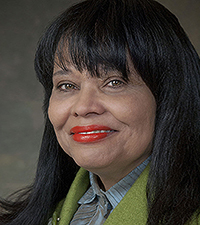

Linda Wallace
By Linda S. Wallace
It took many painful years for me to stumble upon a remarkable discovery: Not everything bad that happens to me occurs because my skin is brown.
On the contrary, I find that the fact I am female seems to matter considerably in the business world. On two occasions, supervisors offered me jobs I had not applied for (and didn’t really want) because they felt I had “the right style and look.”
More than a quarter-century after entering an era when tolerance, diversity and differences were enthusiastically embraced by America as a strategic mission, discrimination lawsuits are siphoning off millions of dollars that rightfully belong to shareholders.
Today’s workers who are denied jobs or promotions point to a wide range of factors: age, foreign accents, gender, sexual orientation and religion. Having a more flavorful variety of Equal Employment Opportunity Commission complaints does not exactly constitute progress.
Efforts to eliminate cultural bias in the workplace have failed, in part, because of the shifting cultural mindset. Over past decades, many White Americans expected that minorities and immigrants would conform to their style of dress, their behavior and their language — and many did. Today, many newcomers opt to remain connected to their old cultures, customs and values. They choose to stand apart rather than to blend in.
So what is a democracy to do?
Well, for starters, each of us needs to accept responsibility for the roles we play. Since we don’t agree, we all need to learn how to manage conflict so diversity becomes a corporate asset rather than a liability.
Frequently, assumptions, based upon unconscious bias or cultural beliefs, cloud our judgments. Unconscious biases are simply the preferences most humans harbor, often without acknowledging them or ever recognizing their existence. They influence decisions by shaping the questions we ask; the issues we overlook; the way we interpret a job applicants’ answers, etc. Moreover, in business, they can guide our daily decisions, determining whom we see as friendly and approachable, whom managers decide to mentor and, ultimately, how well diverse groups fit in and how much they contribute.
To manage biases and achieve workplace equity, management and workers have to probe how and why they respond to diverse workers, and audit actions and policies in an effort to better understand how both impact diversity.
To foster workplaces where all individuals can fully contribute, we should make the following shifts:
- From intention to outcomes. Develop ways to identify and measure the degree to which corporate policies and practices have disparate impacts on women or ethnic groups. For example, companies that allow sales teams to meet in strip clubs may unintentionally restrict the progress and advancement of its female associates.
- From colorblindness to recognizing and managing bias. Identify the cultural, social and political biases that may impair sound decision-making. Provide staff with techniques and tools to manage their cultural lenses. Visit www.tolerance.org/hidden_bias/index.html and take a quick quiz to determine if you have a hidden bias.
- From diversity to inclusiveness. Broaden diversity programs beyond skin color and gender, and focus on inclusiveness. Foster an environment that allows diverse individuals to be their best. Generational diversity as well as diversity in organizational functions – finance, marketing, sales, etc. — should be included
- From powerlessness to powerful. Set high expectations for all individuals, and create culturally appropriate strategies to help each person excel. Many organizations focus on identifying characteristics of successful minority, women and youthful workers yet fail to similarly identify characteristics of managers who excel with these groups. It takes two solid halves to make a whole.
- From “me” to “our.” Once we create inclusive organizations, focus less on “my group” and more on “our” common interests.

















Leave a Comment